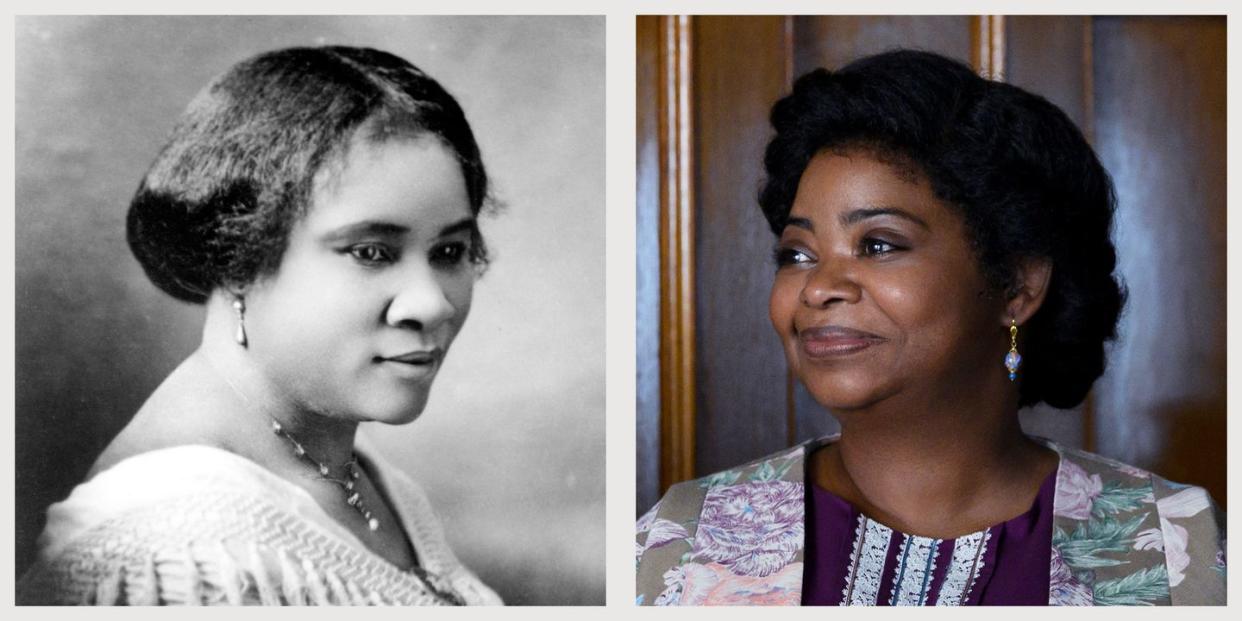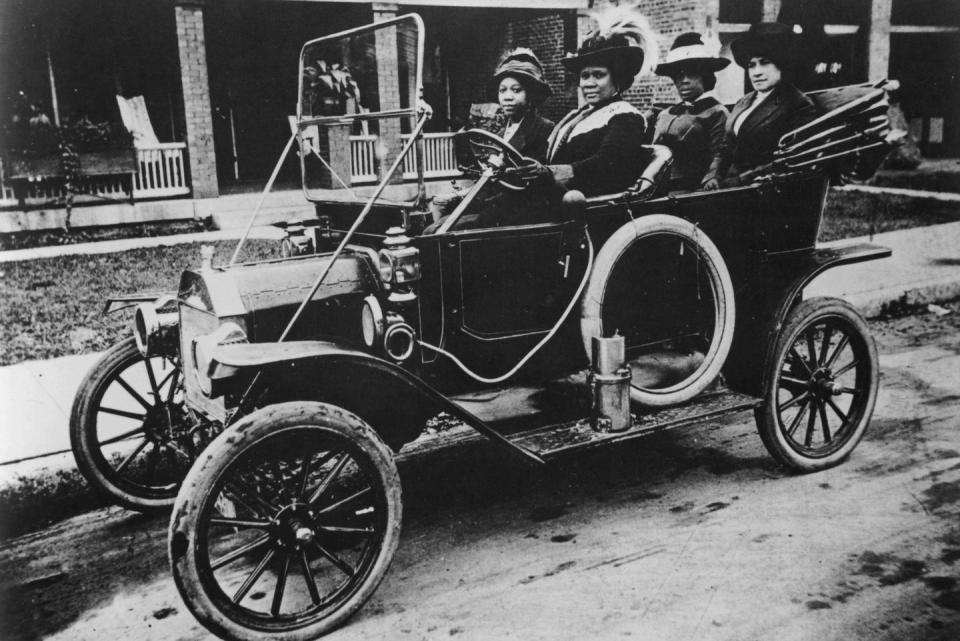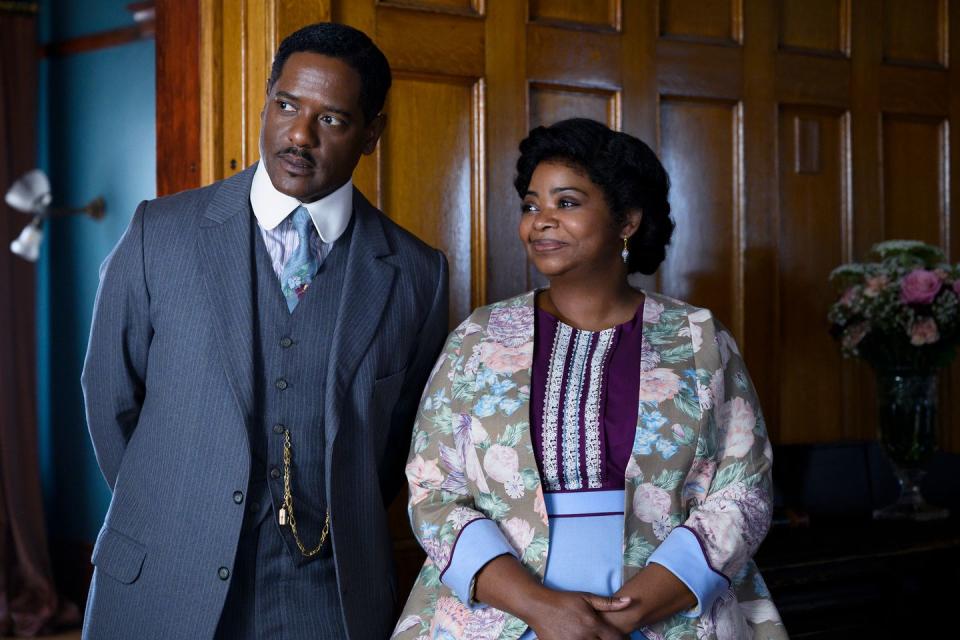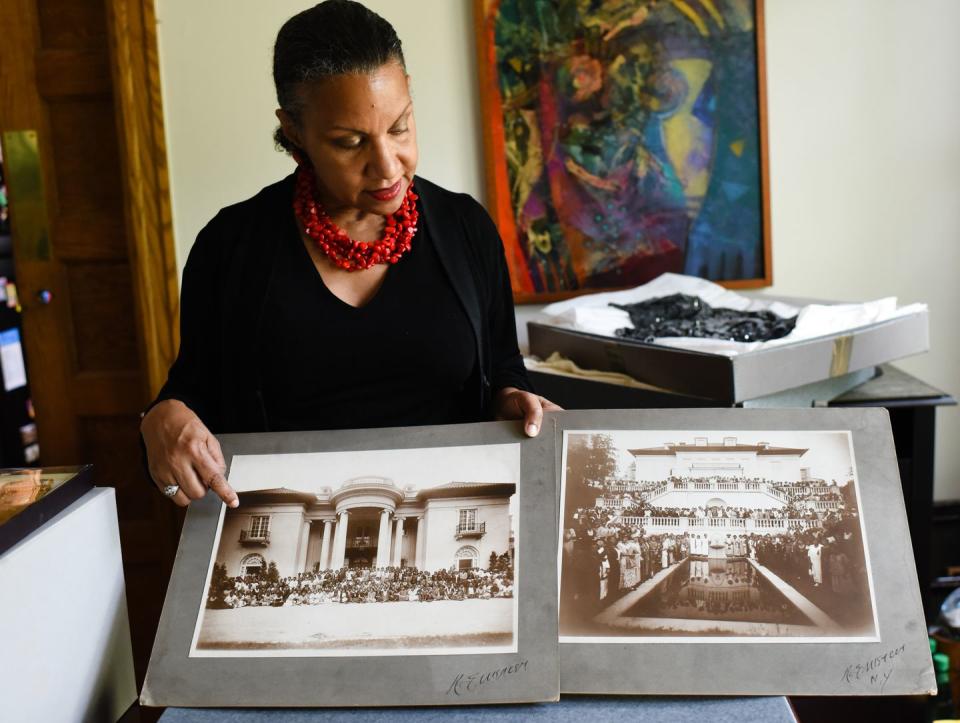Madam C.J. Walker's Life Got the Netflix Treatment with Self-Made. Here's the True Story.

To say that the world has changed dramatically over the past week is an understatement. One unexpected side effect of this unsettling new era is that "too much TV" is suddenly starting to look like just the right amount of TV, and Netflix's new historical drama Self-Made: Inspired by the Life of Madam C.J. Walker is a perfect choice if you're looking for some inspiration and escapism.
Octavia Spencer stars in the eight-episode series as Madam C.J. Walker, who is now known as America's first black female self-made millionaire. Based on the biography On Her Own Ground by A'Lelia Bundles—Walker's own great-great granddaughter—the show follows "an African American washerwoman [who] rises from poverty to build a beauty empire and become the first female self-made millionaire." Before you delve into your binge this weekend, here are a few key facts to know about the real Walker.
Walker has a remarkable family history.
Though she's now widely known by her married name, Walker's given name was Sarah Breedlove. She was born in December of 1867 on a Louisiana cotton plantation—the youngest of five children, and the first in her family to be free-born. Her parents, Owen and Minerva Breedlove, were former slaves who were freed shortly prior to Sarah's birth, and both died before she was seven years old.
When Sarah was ten, she moved with her sister and brother-in-law to Mississippi, and a few years later at the age of 14 she married Moses McWilliams. According to Biography, her marriage was likely one of necessity; Sarah needed to escape both an exploitative working environment and her abusive brother-in-law. She gave birth to her daughter, Lelia (who would later change her name to A'Lelia), in June of 1885.

She built her fortune in the hair care industry.
After her husband Moses died, Sarah moved with the two-year-old Lelia to St. Louis, Missouri, to live close to her brothers. She found a job as a washerwoman (essentially a laundress), which at $1.50 a day paid well enough for her to send Lelia to public school.
After developing a scalp disorder which caused severe hair loss, Sarah became interested in the science of hair care, and started experimenting with a mix of homemade and store bought remedies for her condition. It was around this time that she met Annie Turnbo Malone, a black haircare entrepreneur and Sarah's future rival. Sarah became a sales agent for her, and was one of Malone's earliest hires. (Malone would later claim that she was responsible for curing Sarah's baldness.) In 1905, she moved to Denver, Colorado, and continued working for Malone there.
By this time Sarah had met and married her second husband, Charles Joseph "C.J." Walker, whose promotional expertise came in handy when she decided to split from Malone in 1906 and develop her own hair care treatment, then called Walker's Wonderful Hair Grower. It was reportedly Charles who encouraged her to adopt her distinctive moniker, Madam C.J. Walker.

She founded the Madam C.J. Walker Manufacturing Company in 1910.
By this time, Walker and her husband had been traveling around the South for many years, promoting both her line of African American hair care products and her "Walker system" of hair care, which involved a combination of scalp preparation, sulfur-based products, and heated iron combs. (While neither Walker nor Malone invented these treatments, they are responsible for popularizing them.) Walker opened a factory and a beauty school in Pittsburgh in 1908, and ultimately incorporated the Madam C.J. Walker Company in Indianapolis, Indiana.
The company sold hair care products and cosmetics, but also trained a huge number of salespeople and beauticians known as Walker Agents who promoted the company's products and Walker's philosophy of "cleanliness and loveliness."
“At a time when unskilled white workers earned about $11 a week, Walker’s agents were making $5 to $15 a day, pioneering a system of multilevel marketing that Walker and her associates perfected for the black market,” Henry Louis Gates Jr. wrote in a 1998 article for Time. “More than any other single businessperson, Walker unveiled the vast economic potential of an African-American economy, even one stifled and suffocating under Jim Crow segregation.”

Walker's groundbreaking legacy has long outlived her.
By the time Walker died in 1919, she was considered the wealthiest African-American businesswoman and wealthiest self-made woman in America. As significant an accomplishment as that is, her legacy goes far beyond the financial: she was an active philanthropist, and donated millions of dollars to causes promoting racial justice and equality, including the NAACP. She was also instrumental in building a black YMCA in Indianapolis.
She also left behind Villa Lewaro, a 34-room mansion in Irvington, New York—a suburb she shared with the Rockefellers and their ilk. Walker commissioned Vertner Tandy, the first black architect to be licensed in New York state, to design the Neo-Palladian estate.
As a pioneer, an innovator, and a black female entrepreneur, Walker has inspired countless generations.
You Might Also Like

